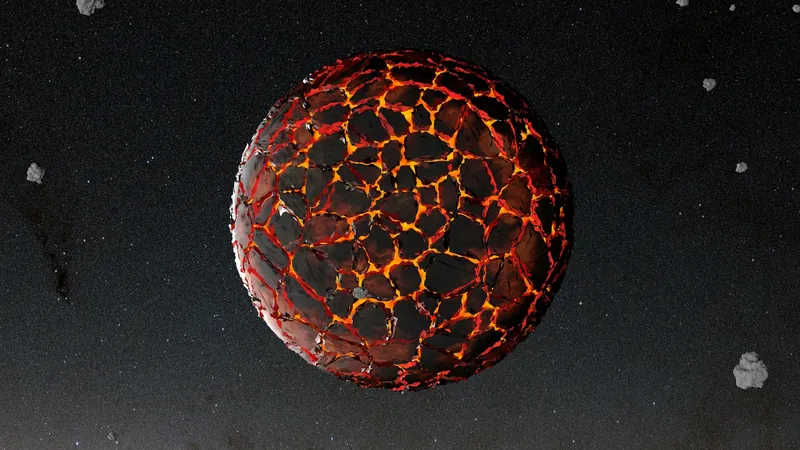
Ancient Magma Ocean: The Hidden Heart of Earth’s Evolution Revealed
2025-04-16
Author: Arjun
Did Earth Once Have a Vast Ocean of Magma?
New research uncovers that our planet may have harbored a massive ocean of magma beneath its surface in the early stages of its history, shedding light on puzzling geological anomalies observed in the Earth's mantle today.
The Debate Over Earth’s Magma Ocean
For years, geoscientists have wrestled with the existence of this mysterious magma ocean. Evidence suggests that shortly after Earth's formation, a continuous sea of molten material developed at the interface between the core and the mantle. Traditional models of the young, molten Earth indicated that it solidified from the bottom up, sparking skepticism about the presence of such an expansive magma reservoir.
However, a groundbreaking study published on March 26 in the journal Nature asserts that a magma ocean not only could exist but was, in fact, an inevitable outcome of Earth’s evolution.
Unraveling Geological Secrets
The research indicates that remnants of this primordial magma ocean could still be lurking beneath our feet, manifested as large low-shear velocity provinces (LLVPs). These areas in the deep mantle show a slower propagation of earthquake waves compared to other mantle regions, leading scientists to ponder their origins.
Debates rage on whether these LLVPs are remnants of ancient oceanic crust pushed deep into the mantle or echoes from the Earth’s ancient magma ocean, dating back over 4.4 billion years, with this study siding with the latter explanation.
Impact on Earth’s Geological Dynamics
Lead author Charles-Édouard Boukaré, a planetary physicist from York University in Toronto, highlighted the importance of these findings, stating, "This could profoundly alter our understanding of thermal interactions between the core and mantle and might even reshape our views on tectonic plate movements."
Exploring Earth's Early Formation
The researchers developed a novel model of Earth's formation, blending geochemical analysis with seismic data to peer into its deep past. They concentrated on critical trace elements that prefer to remain in magma during crystallization, noting how these elements can reveal the sequence and timing of mantle solidification.
A Window into Planetary Memory
In their groundbreaking model, the team focused on an advanced stage of mantle solidification. They discovered that, regardless of where solidification began, a basal magma ocean formed, suggesting the essential structures of our planet were established early on.
"This implies a sort of memory embedded within the planet's structure," Boukaré explained. "The early conditions set the stage for the planet's subsequent evolution over billions of years."
Future Research Directions
Boukaré envisions enhancing their model by integrating additional trace elements and even applying it to other rocky planets like Mars. "Perhaps this magma ocean phenomenon is not exclusive to Earth," he speculated, potentially reshaping our understanding of planetary evolution across the solar system.
 Brasil (PT)
Brasil (PT)
 Canada (EN)
Canada (EN)
 Chile (ES)
Chile (ES)
 Česko (CS)
Česko (CS)
 대한민국 (KO)
대한민국 (KO)
 España (ES)
España (ES)
 France (FR)
France (FR)
 Hong Kong (EN)
Hong Kong (EN)
 Italia (IT)
Italia (IT)
 日本 (JA)
日本 (JA)
 Magyarország (HU)
Magyarország (HU)
 Norge (NO)
Norge (NO)
 Polska (PL)
Polska (PL)
 Schweiz (DE)
Schweiz (DE)
 Singapore (EN)
Singapore (EN)
 Sverige (SV)
Sverige (SV)
 Suomi (FI)
Suomi (FI)
 Türkiye (TR)
Türkiye (TR)
 الإمارات العربية المتحدة (AR)
الإمارات العربية المتحدة (AR)